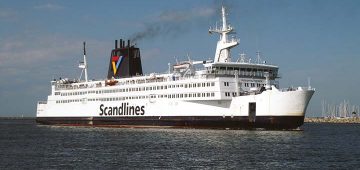The global container fleet market is expected to reach US$14.41 billion by the end of 2025, from US$8.81 billion in 2016, an increase of 63.5%. The figures, reported by Transparency Market Research (TMR) in a new study, could mean the global container fleet market will exhibit a CAGR of 5.7% between 2017 and 2025. TMR found that AP Moller-Maersk, Mediterranean Shipping Co., CMA CGM, China Ocean Shipping, Evergreen Marine, and Hapag Lloyd constituted nearly 58.3% of the global container fleet market in 2016. TMR has found that Asia Pacific emerges as the dominant market with a share of 35.2% in 2016. The region also exhibits the highest CAGR and is forecasted to remain the leading segment in the global container fleet market until 2025. TMR stated that the global container fleet market is being driven by the increasing demand for intercontinental and intra-continental freight transportation. It added, “This has in turn encouraged leading market players to look for mergers and acquisitions to strengthen their foothold. Besides this, the companies are also seeking technological advancements through strategic partnerships”. Last year, the maritime safety and security technology market was forecasted to grow by over 40% for the period of 2016 to 2021.
This is good news for the industry as there has been a slow-down in recent years resulting in the catastrophic demise of Hanjin and serious concerns about the future of some other companies, notably Yang Ming and Rickmers.

In the meantime, container ships just keep getting bigger. The ‘World’s largest’ title went from MSC Oscar and its sisters to the MOL Triumph, the first in a series of four new mega containerships for Japan’s Mitsui O.S.K. Lines, Ltd., (MOL) which has been named at Samsung Heavy Industries Ltd.’s Geoje, South Korea shipyard. The 210,678gt MOL Triumph will be able to carry 20,170 TEU. The celebrations were hardly over when Maersk took delivery of the 20,568 TEU 214,286gt Madrid Maersk which now holds the record as the container ship with the largest capacity.
The size of these vessels was unthinkeable only a few years ago. Maersk set the first standards with the ‘E’ class followed by the ‘Triple E’ class, but now MOL and Maersk are setting the bar higher. Where will it end?





Comments
Sorry, comments are closed for this item